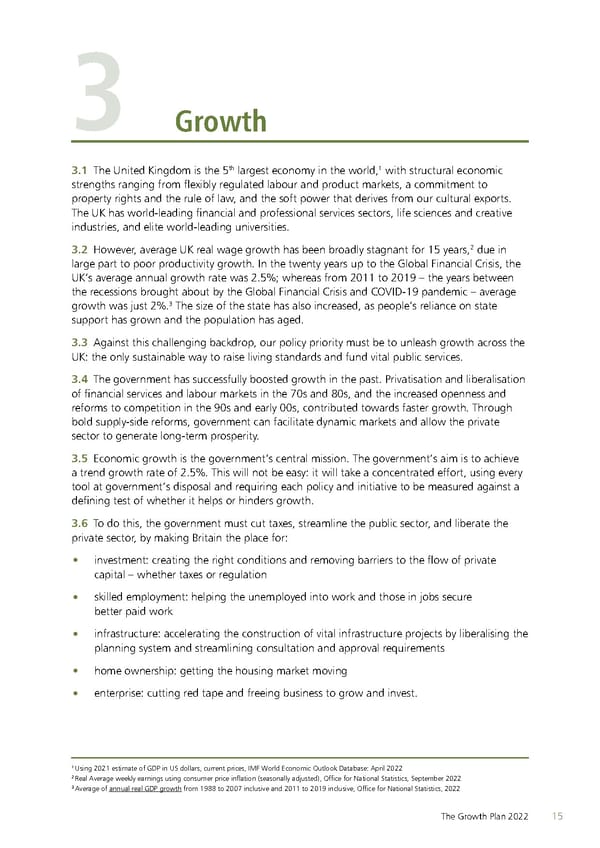3 Growth th 1 3.1 The United Kingdom is the 5 largest economy in the world, with structural economic strengths ranging from flexibly regulated labour and product markets, a commitment to property rights and the rule of law, and the soft power that derives from our cultural exports. The UK has world-leading financial and professional services sectors, life sciences and creative industries, and elite world-leading universities. 2 3.2 However, average UK real wage growth has been broadly stagnant for 15 years, due in large part to poor productivity growth. In the twenty years up to the Global Financial Crisis, the UK’s average annual growth rate was 2.5%; whereas from 2011 to 2019 – the years between the recessions brought about by the Global Financial Crisis and COVID-19 pandemic – average 3 growth was just 2%. The size of the state has also increased, as people’s reliance on state support has grown and the population has aged. 3.3 Against this challenging backdrop, our policy priority must be to unleash growth across the UK: the only sustainable way to raise living standards and fund vital public services. 3.4 The government has successfully boosted growth in the past. Privatisation and liberalisation of financial services and labour markets in the 70s and 80s, and the increased openness and reforms to competition in the 90s and early 00s, contributed towards faster growth. Through bold supply-side reforms, government can facilitate dynamic markets and allow the private sector to generate long-term prosperity. 3.5 Economic growth is the government’s central mission. The government’s aim is to achieve a trend growth rate of 2.5%. This will not be easy: it will take a concentrated effort, using every tool at government’s disposal and requiring each policy and initiative to be measured against a defining test of whether it helps or hinders growth. 3.6 To do this, the government must cut taxes, streamline the public sector, and liberate the private sector, by making Britain the place for: • investment: creating the right conditions and removing barriers to the flow of private capital – whether taxes or regulation • skilled employment: helping the unemployed into work and those in jobs secure better paid work • infrastructure: accelerating the construction of vital infrastructure projects by liberalising the planning system and streamlining consultation and approval requirements • home ownership: getting the housing market moving • enterprise: cutting red tape and freeing business to grow and invest. 1 Using 2021 estimate of GDP in US dollars, current prices, IMF World Economic Outlook Database: April 2022 2 Real Average weekly earnings using consumer price inflation (seasonally adjusted), Office for National Statistics, September 2022 3 Average of annual real GDP growth from 1988 to 2007 inclusive and 2011 to 2019 inclusive, Office for National Statistics, 2022 The Growth Plan 2022 15
 The Growth Plan 2022 Page 15 Page 17
The Growth Plan 2022 Page 15 Page 17